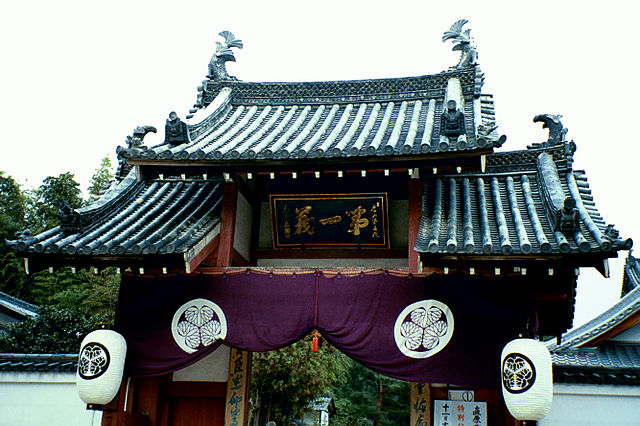
Manpuku-ji Temple
Kyoto, Japan

|
Manpuku-ji TempleKyoto, Japan |
Manpuku-ji (1661, also spelled Mampuku-ji) is a temple built in the Chinese Ming style by Ingen (1592-1673), a Chinese priest and refugee from the fall of the Ming Dynasty in 1644. Its surroundings are the hills in Uji, south of Kyoto, where tea is grown. Ingen belonged to the Obaku sect of Zen, an eclectic branch with Amidist and Esoteric influences. Manpukuji, with its largely Chinese clergy, served as a center and conduit for Chinese culture in Tokugawa Japan, including steeped tea, sculpture, calligraphy, Confucianism, and literati painting.
This photo shows the outer gate (So-mon). The Chinese-style roof is crowned with dolphin finials, and two Chinese lanterns hang from the eaves.

|

|